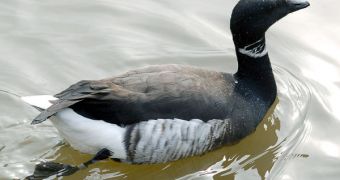Winter was until recently the traditional season when up to 90 percent of bird species in the Arctic migrated South, to warmer skies. But that seems to no longer apply today. An investigation by the US Geological Service (USGS) has recently determined that as much as 30 percent of species would now rather spend their winters in Alaska, than in Mexico, for example. The situation is again a clear proof that global warming is happening very fast at the North Pole, and that action is required immediately to counteract these effects, the BBC News reports.
The team believes that this trend is directly connected to the temperature shifts that were recorded in the Northern Pacific and the Bering Sea over the past couple of years. “This suggests that environmental conditions have changed for one of the northernmost wintering populations of geese,” USGS Alaska Science Center researcher David Ward shares. He is also the lead author of a new study detailing the find, which appears in the latest issue of the respected scientific journal Arctic.
Records of Pacific brant populations in the Arctic show that, before 1977, less than 3,000 individuals from the species remained in Alaska during the winter season. Since then, their numbers have increased to about 40,000 members, which is a sharp rise by any standards. While the climate change that began to manifest itself after 1976 had well-documented effects on some animals, such as, for instance, fish and seal populations, estuarine species were left out of investigations.
“Our study suggests that the growth in the brant population wintering on the Alaska peninsula is linked to the same climate change,” Ward says. “Undisturbed access to sufficient amounts of eelgrass is crucial to the winter survival of this species.” Because of higher temperatures during the winter, less ice formed, and eelgrass was able to grow plentifully, sufficiently enough to sustain such a large group. The trend is not going away, the experts add. More and more birds remain in Alaska each winter, as temperatures continue to rise, and more food becomes available.
But the species is also subjecting itself to a high risk by not leaving, Ward adds. If a sudden, cold spell were to hit Alaska, then a significant part of the population that remained behind would be decimated. This would, of course, have long-term implications on the safety of the species itself, the USGS team concludes.

 14 DAY TRIAL //
14 DAY TRIAL //